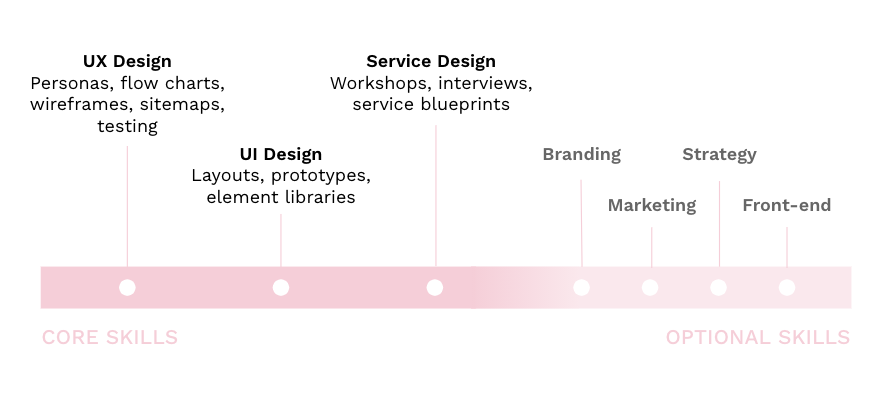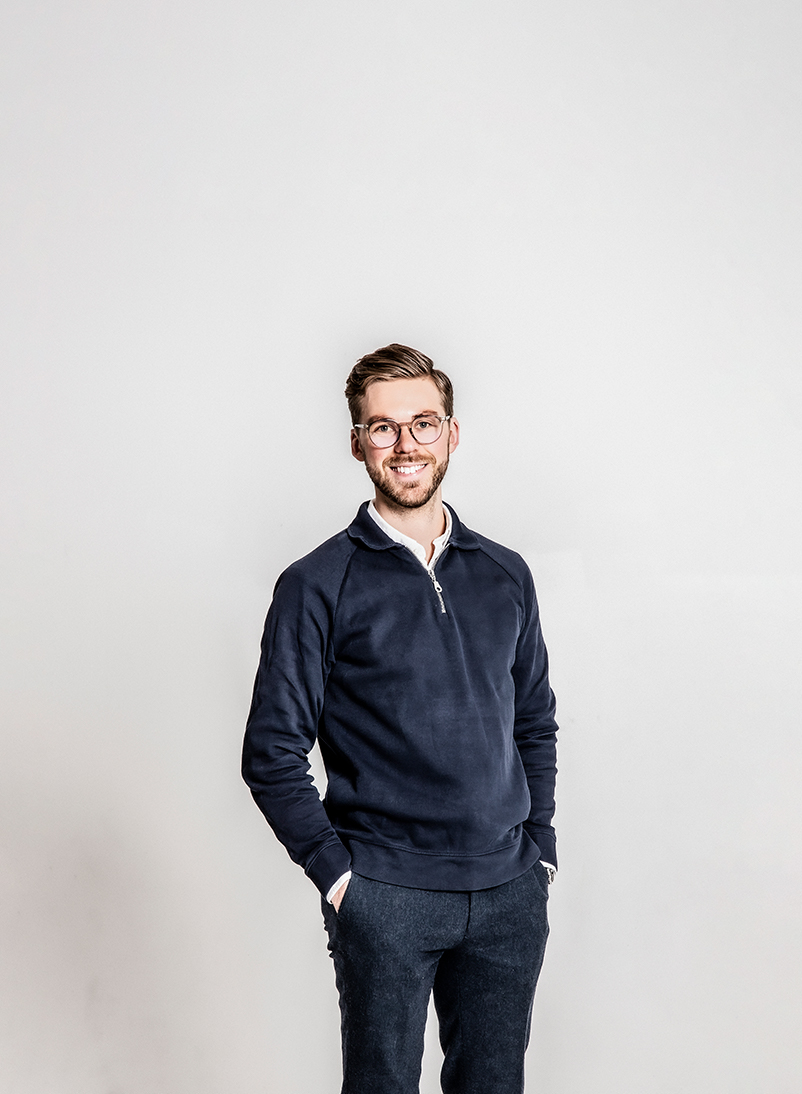The Data Handbook
How to use data to improve your customer journey and get better business outcomes in digital sales. Interviews, use cases, and deep-dives.
Get the bookDesigners come in many forms and there are a lot of buzz-words out there that might make you as a designer confused about what you actually are or how to position yourself on the job market. In this post we are going to focus on the term ‘Growth Designer’ and define what it means, or as we at Columbia Road call it — a business-minded designer.
You can read more about what we mean by business-minded designers from this blog by my colleague Juuli: Designer or a business-minded designer – what’s the difference?
Breaking down what it means to be a Growth Designer
For us, the base of being a growth designer is someone who wants their creative work to have a bigger impact than just creating the look and feel of the products and services they’re working on. There are no silver bullets for complex problems. Business-driven design is where the designer needs to think about the business impact of the design and have a curiosity for tracking and improving it continuously rather than just working on the visuals at the end of the product launch.
We’ve listed some key attributes for what a Growth Designer contributes to as part of their day-to-day work:
1. Being a strategic contributor
Being a growth designer is more than just thinking of pixel-perfection. It’s about understanding the business objectives and defining opportunity areas in current and future markets. They work closely with the business owners and management to together evaluate and improve the roadmap for the product, service or the company as a whole. As a growth designer, you are part of the product development process from day one, exploring data and guiding companies to understand how to track their goals.
It's scary to set up business KPIs for the digital domain, because then you will know if you're failing. However, if you don't have those KPIs in place you might be failing every day – only without knowing it
Columbia Road's client
This is where we as growth designers help our clients understand what data they need to track, how to track it and utilise it in the best way.
2. Bringing different perspectives and having a wide set of skills
As a growth designer, you need a wide set of skills, not only hard skills but also soft skills like facilitation, user heuristics, autonomy and also bringing previous experiences and learnings from other industries into your projects. A growth designer is an analytical and creative person with knowledge spanning from UX design to frontend development. You don’t need to excel at all of the fields but have your own focus area where you are an expert and have a basic understanding of the others. Sometimes a designer's job is not just about traditional design but about solving our clients' problems and our job is to be creative in how we can help our clients reach their business goals.

3. Being able to balance between business value, user value and technology
Does that micro-animation bring enough value for the users to motivate the developers extra hours to make the animation come to life? If there is a slight hesitation then you might already know the answer. As a growth designer, you should know and be aware of how your designs affect the business goals. In all projects and situations there comes a time where you need to evaluate the value of your designs and do a trade-off.
Having the business in mind, growth designers ask themselves a set of questions, for example:
- If we create this new, never-done-before sleek parallax scroll, how would it contribute to meeting our business goals?
- Is this design worth testing or can we ship it without a long validation process?
- What growth opportunities can we create from the already existing features for a smooth implementation?
A growth designer is more interested in shipping to learn from A/B testing instead of shipping complete features. With this said, sometimes the client needs that complex parallax scroll, as their UI is the core part of their product differentiation, and therefore it makes sense to spend extra time on it as it provides the most value. So all in all it’s about understanding what gives the most value.
Would you like to be a growth designer today or in the future?
Are you interested in playing a key part of the process from the beginning to the end and working in cross-collaboration between marketing, data, engineering and product? Then being a Growth Designer might be exactly what you should focus on. If you're interested in knowing more about how to work as a Growth designer we have listed some key activities to think of in your work:
Growth Design process
- Identify growth opportunities by embracing data
- Brainstorm ideas based on the data and tie your design work to the business value
- Don’t be afraid to test your ideas and hypotheses through qualitative and quantitative research
- Ship your ideas, learn from your insights and take action on them to create sustainable long-term experiences that have a larger impact on the business and users
Did you get inspired to become more business-minded and take the step towards becoming a growth designer? Or do you already consider yourself to be a growth designer? At Columbia Road, we can offer you an environment that allows business-minded designers to thrive as professionals and to deepen your expertise with like-minded nice colleagues. Take a peek at our open designer positions!
The Data Handbook
How to use data to improve your customer journey and get better business outcomes in digital sales. Interviews, use cases, and deep-dives.
Get the book




